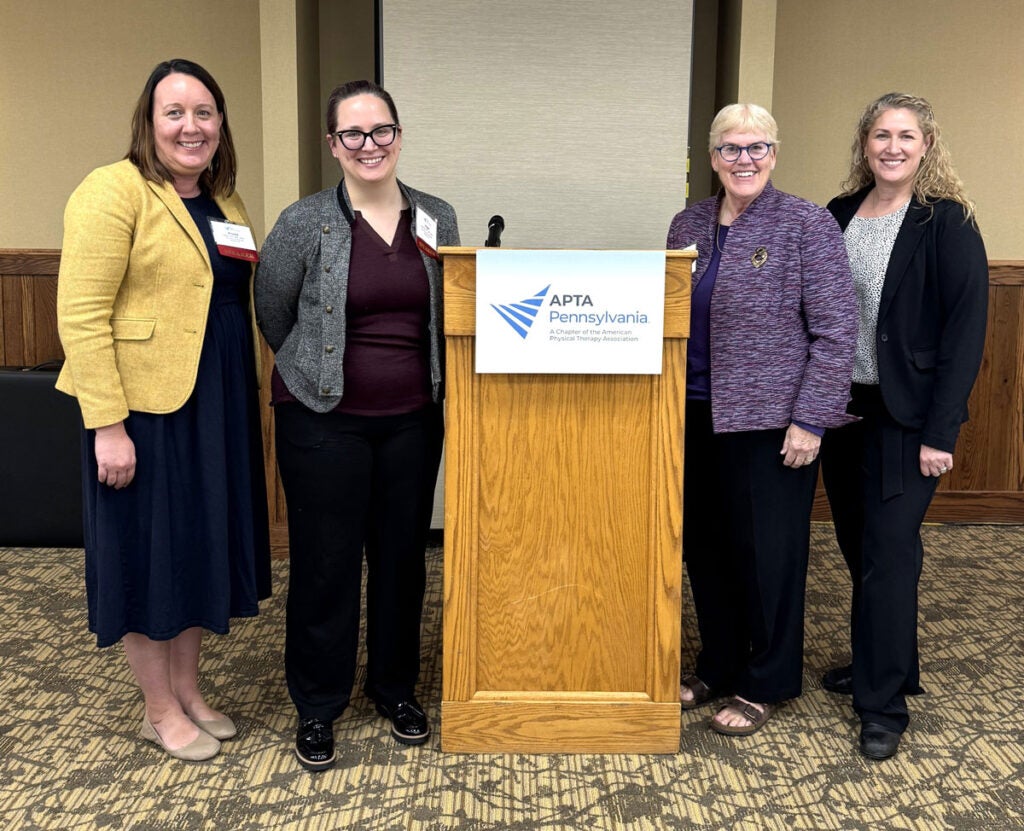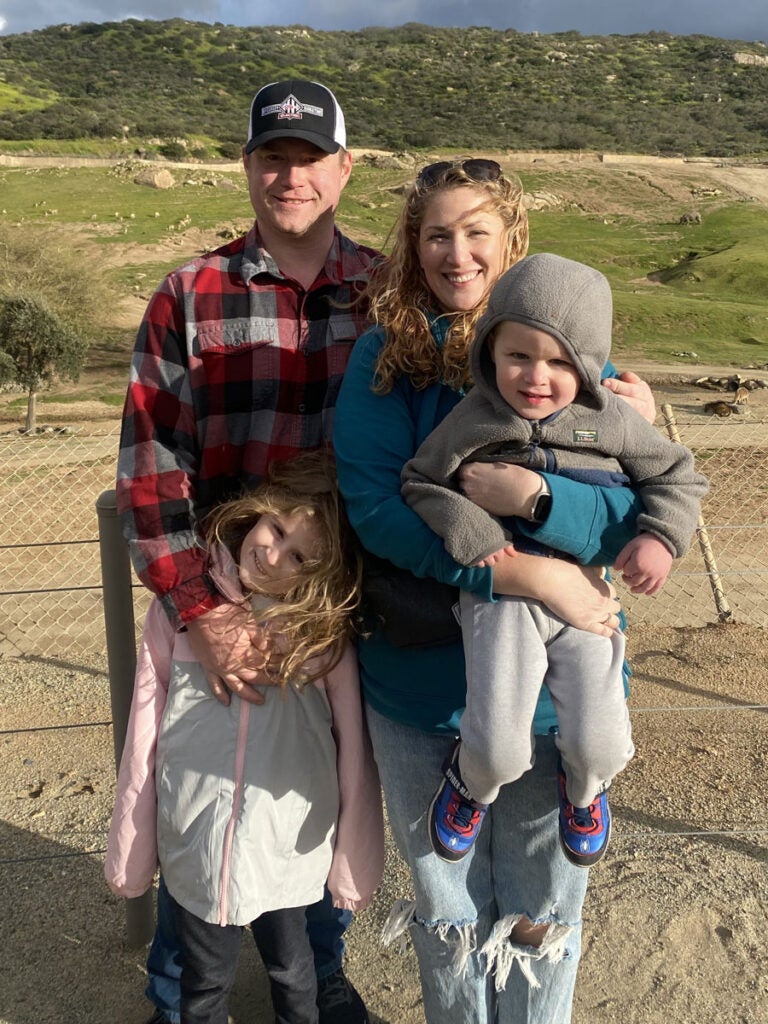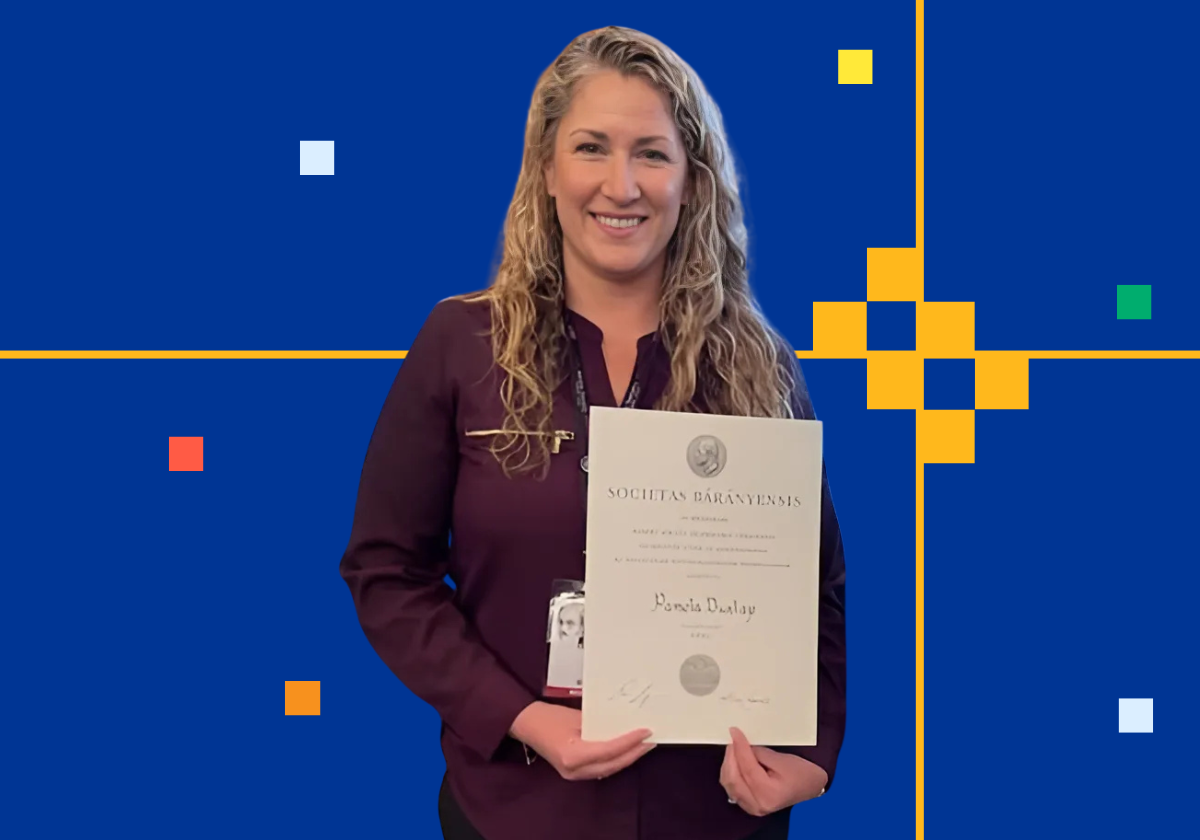Assistant Professor Pamela Dunlap has been teaching in the Pitt Department of Physical Therapy for nearly 15 years, the past four year as a full-time assistant professor. The bold strides she is making in the classroom, research and in the profession have recently been recognized with the American Physical Therapy Association 2025 Margaret L. Moore Award for Outstanding New Academic Faculty Member and a National Institutes of Health Research K23 Career Development Award.
Dunlap’s leadership and contributions are a few of the reasons why Pitt Physical Therapy (PT) remains one of the strongest programs in the country and a draw for top Doctor of Physical Therapy (DPT) students each year.
Discovering the Impact of Physical Therapy
How did you become interested in a physical therapy career?
When I was in high school, I volunteered at a local physical therapy clinic that specialized in vestibular rehabilitation—shout out to Wendy Webb Schoenewald PT! While I was there, I witnessed a patient coming into the clinic feeling dizzy and unsteady due to benign paroxysmal positional vertigo and walk out feeling completely better after just one session. That moment stuck with me. I was fascinated by the immediate and meaningful impact physical therapy could have, and that experience set me on the path to pursue my Doctor of Physical Therapy at Pitt and specialize in vestibular rehabilitation.
What do you find rewarding about a career in physical therapy?
One of the most rewarding parts of being a physical therapist is the opportunity to build meaningful relationships with the people I work with. Each client comes with unique stories and experiences, and it’s a privilege to be part of their journey. I truly enjoy listening, learning from them and helping them work toward their goals. There’s nothing more rewarding than seeing someone regain their ability to participate in the activities that bring them joy.
Teaching at Pitt PT
What is your role at Pitt PT and what do you enjoy about teaching students?
I’ve been an assistant professor at Pitt for the past four years, and I have the privilege of teaching in our neuroscience and neuromuscular physical therapy course series, specifically leading Neuromuscular Physical Therapy 1 and 3.
What I love most about teaching Pitt PT students is their drive and dedication. They’re curious, hard-working and eager to make a difference. It’s incredibly rewarding to guide them as they develop foundational knowledge in neuroscience and then apply that knowledge to clinical concepts in the neuromuscular courses in preparation for entering clinical practice. Witnessing their growth from the classroom to confident entry-level clinicians is one of the best parts of my job.

The Pitt DPT Hybrid Option
You’ve taught in both the on-campus and hybrid options. What is it like teaching hybrid?
I taught as adjunct faculty in Pitt’s on-campus option for nearly a decade before transitioning to a full-time faculty role in our hybrid option. I love the hybrid model. It allows for flexibility and brings together students from across the country with diverse experiences and perspectives, which adds to our dynamic and rich learning environment.
What do you bring to the hybrid option and how do you elevate the hybrid experience?
I draw on my 14 years of clinical experience working with individuals with neurologic disorders to inform my teaching. Our neuromuscular PT courses are case-based and filled with real-life examples. We integrate video demonstrations, interactive asynchronous content and video skill assignments to prepare students before they come to campus for immersion labs where they will have even more opportunities to practice and receive feedback on their hands-on skills.
How do you ensure that students have the hands-on experiences that one would normally think could only be taught in-person?
We utilize hands-on learning even in courses that you may not expect. For example, in our neuroscience course, we use brain specimens during immersion labs to help students understand brain structures and their functions. We also design lab experiences to bring concepts such as sensorimotor adaptation and sensory organization to life. This allows students to participate in learning activities that will solidify some of the complex concepts we discuss in our live sessions and asynchronous learning.
What is Pitt’s approach to ensuring student success in the DPT hybrid option?
At Pitt, student success is truly a team effort. Our faculty and staff strive to go above and beyond to support students—whether it’s through offering extra tutoring sessions, open office hours or discussing difficult clinical cases. Every student is paired with a faculty advisor who’s there to provide mentorship, guidance and support throughout the program. We work hard to create a welcoming environment where students feel comfortable asking questions and growing professionally.

Physical Therapy Research
Your specialty is in neurologic research, which you bring into the classroom so that students become adept at learning current evidence-based research and also directly tie it to what they are studying. Can you expand on your neurologic research if students can get involved in research?
My research focuses on improving the use of evidence-based care for individuals with balance and vestibular disorders. In the classroom, I aim to empower students with the latest evidence so they can become strong advocates for their future patients. Many individuals with dizziness or balance disorders aren’t referred to physical therapy, even though we have strong evidence to support our role in their care. By teaching students not only the “how” but also the “why” behind interventions, I hope they’ll carry that knowledge into their communities and be agents of change.
Students interested in getting involved with research can explore opportunities on the SHRS website (Pitt Passport required) where they can find faculty interests and fill out an application. I also encourage students to reach out directly to faculty whose work they’re passionate about. We love sharing our research and mentoring future clinician-scientists.
Fun Facts
Outside of the classroom what would you like students to know about you?
Although I primarily teach in the hybrid option, I live in Pittsburgh with my husband, Alex, my two children, Adeline (8) and Xan (5) and our dog Winnie. As a family, we love getting outdoors to hike, explore and travel whenever we can.

